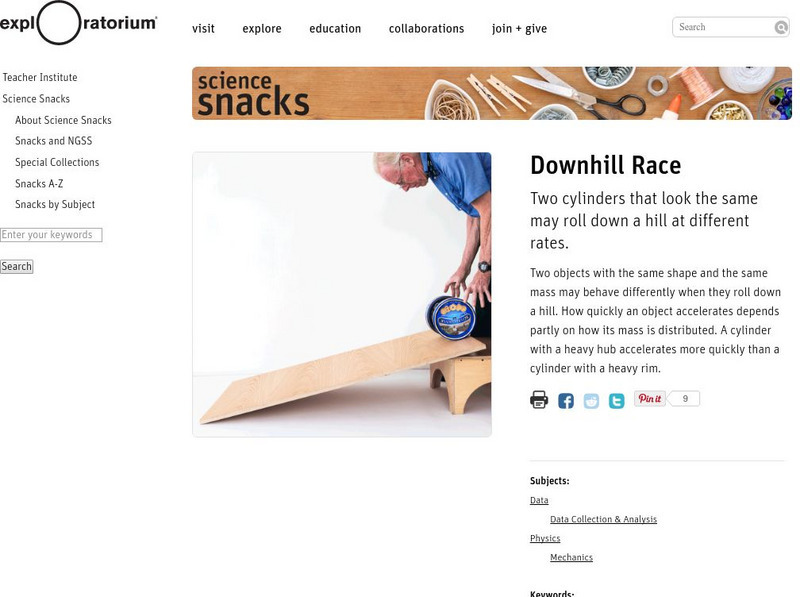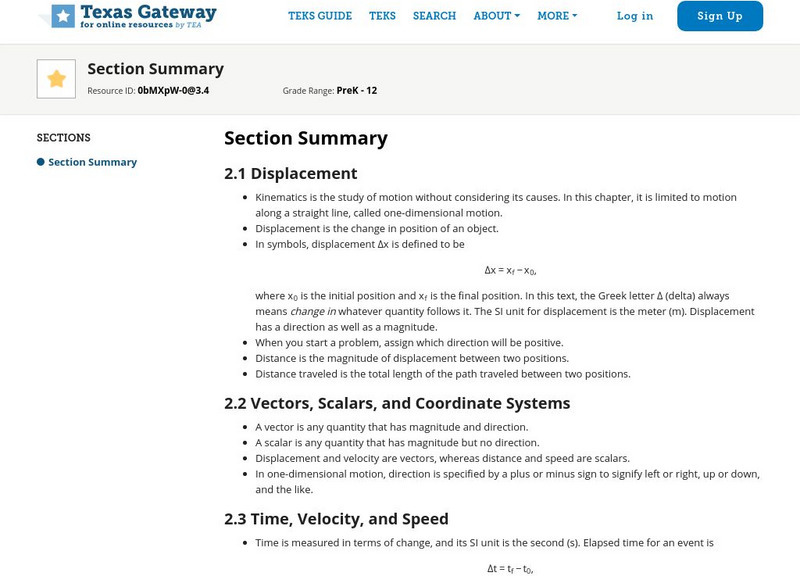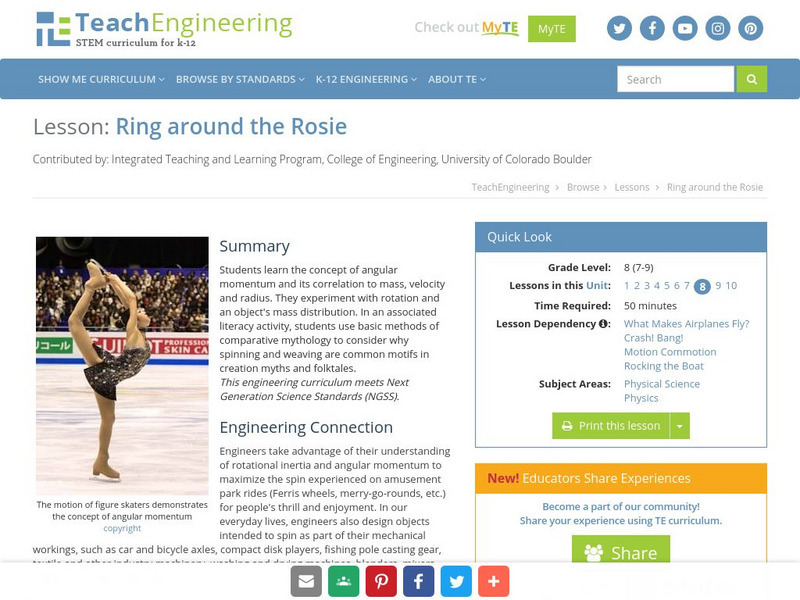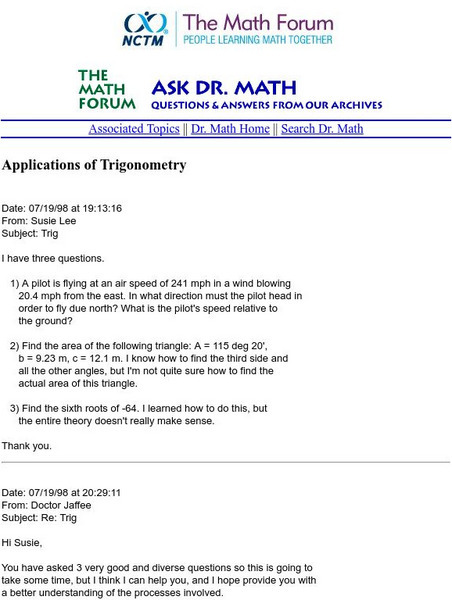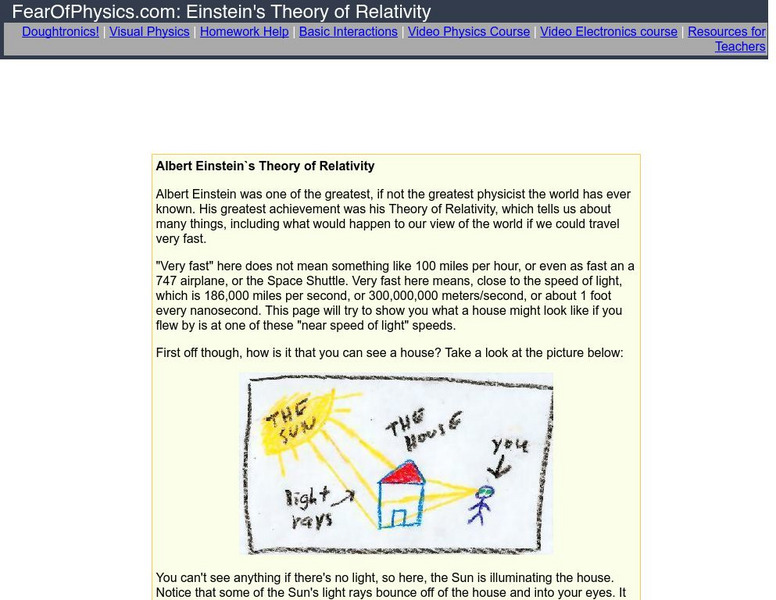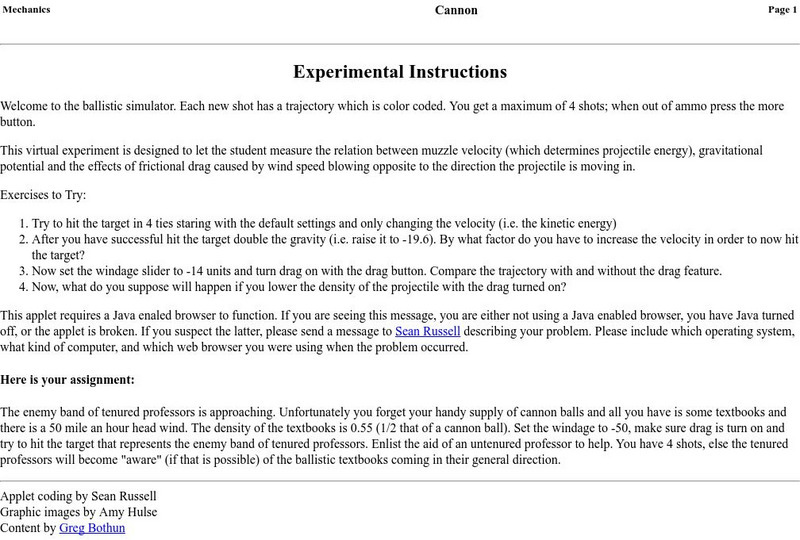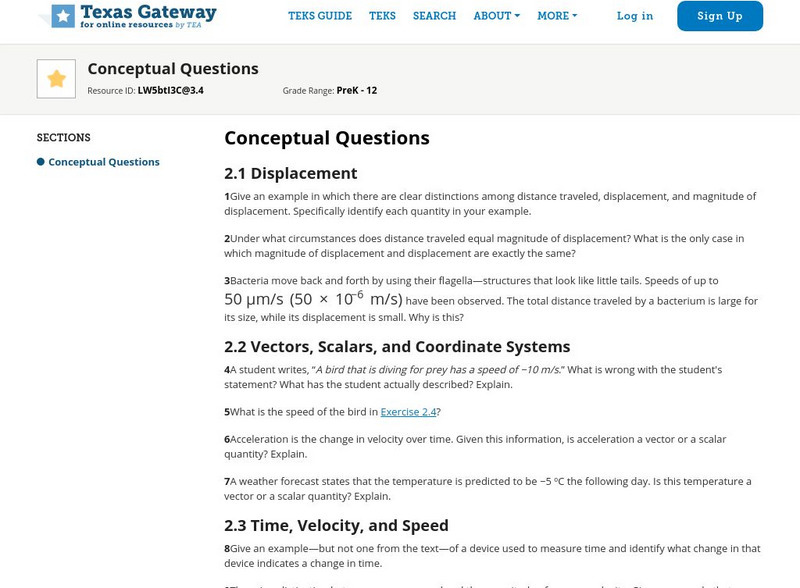Hi, what do you want to do?
Concord Consortium
Concord Consortium: Stem Resources: Launching a Satellite
Do you think you could fire an "unpowered" object into orbit? By controlling the angle and speed at which the satellite is launch, students will try to launch a satellite into space with this computer model. Activity includes questions...
Exploratorium
Exploratorium: Science Snacks: Downhill Race
An activity that explores how two cylinders that are identical in shape and mass may travel down a hill differently due to how their mass is distributed. Learn how the distribution of mass in an object can affect its translational...
Texas Education Agency
Texas Gateway: Kinematics Section Summary
This is a summary of the main topics for AP Physics Chapter 2 Kinematics. These include Displacement; Vectors, Scalars, and Coordinate Systems; Time, Velocity, and Speed; Acceleration; Motion Equations for Constant Acceleration in One...
TeachEngineering
Teach Engineering: Ring Around the Rosie
Students learn the concept of angular momentum and its correlation to mass, velocity and radius. They experiment with rotation and an object's mass distribution. In an associated literacy activity, students use basic methods of...
Physics Aviary
Physics Aviary: Acceleration Challenge
Challenges students to get as many vehicle accelerations as possible in a 3 minute time frame. Students must push on the gas to accelerate their vehicle and then use the change in velocity and the change in time to get the acceleration...
Science Education Resource Center at Carleton College
Serc: Centripetal Force Activity
In this physics activity, students will simulate a race car on a circular track. Velocity, acceleration, and force vectors will be analyzed at various places along the track. As the students progress in the activity, prompts for student...
Texas Instruments
Texas Instruments: Cas Your Girl Friend
In this activity, students find the time a man takes to catch a moving train. They solve the problem with and without using calculus.
NASA
Nasa: The Rocket Motor
An online version of a book pertaining to task of launching rockets into space and subsequently navigating them through space. The first several "chapters" (pages) describe the influence of gravity on Earth and the barriers which it...
National Council of Teachers of Mathematics
The Math Forum: Ask Dr. Math: Applications of Trigonometry
Dr. Math answers a word problem involving the use of vectors.
Other
Fear of Physics: Albert Einstein's Theory of Relativity
Fear of Physics uses animations and simple language to teach the theory of relativity.
University of Oregon
Uo: Cannon Simulator: Experimental Instructions
This virtual experiment is designed to let the student measure the relation between muzzle velocity (which determines projectile energy), gravitational potential and the effects of frictional drag caused by wind speed blowing opposite to...
Middle School Science
Middle School Science: Motion Notes
Personal site in which a teacher outlines a unit on motion. Probes through topics such as average speed, velocity, acceleration, speed, deceleration, force and more.
Department of Defense
Do Dea: Instantaneous Rates of Change
Prepare for the AP Calculus exam by reviewing the most common relationships that are used in calculus. Formulas and examples are provided.
Texas Education Agency
Texas Gateway: Physics of Hearing: Ultrasound
By the end of this section, you will be able to define acoustic impedance and intensity reflection coefficient, describe medical and other uses of ultrasound technology, calculate acoustic impedance using density values and the speed of...
Physics Aviary
Physics Aviary: Circular Acceleration
This program gives students a visual representation of why an object moving in a circle at constant speed is accelerating. This program will guide students through a method of calculating the circular acceleration based on the change in...
PBS
Pbs Teachers: Weightlessness Experiment
Demonstrate how water and a cup fall at the same rate of speed.
Physics Aviary
Physics Aviary: Work to Ke Lab
This lab is designed to have students discover the relationship between the work that is done by a force and the speed gained by the object experiencing the force. Students can adjust the strength of the force. They can decide how much...
CK-12 Foundation
Ck 12: Earth Science: Distance Between Stars
[Free Registration/Login may be required to access all resource tools.] How to use parallax to measure distances to stars.
Physics Aviary
Physics Aviary: Practice Problems: Drone Delivery Problem
Students must determine where a drone should be when it releases its package so that the object lands on the target.
Texas Education Agency
Texas Gateway: Ap Physics: Kinematics Conceptual Questions
This page provides practice questions on each of the conceptual content sections in AP Physics: Chapter 2: Kinematics.
Other popular searches
- Average Speed and Velocity
- Speed and Velocity Problems
- Speed and Velocity Science
- Speed and Velocity Labs
- Motion Speed and Velocity
- Speed and Velocity Graphing
- 11.2 Speed and Velocity
- Determine Speed and Velocity
- Velocity and Speed
- Calculate Speed and Velocity
- 112 Speed and Velocity
- Determing Speed and Velocity






